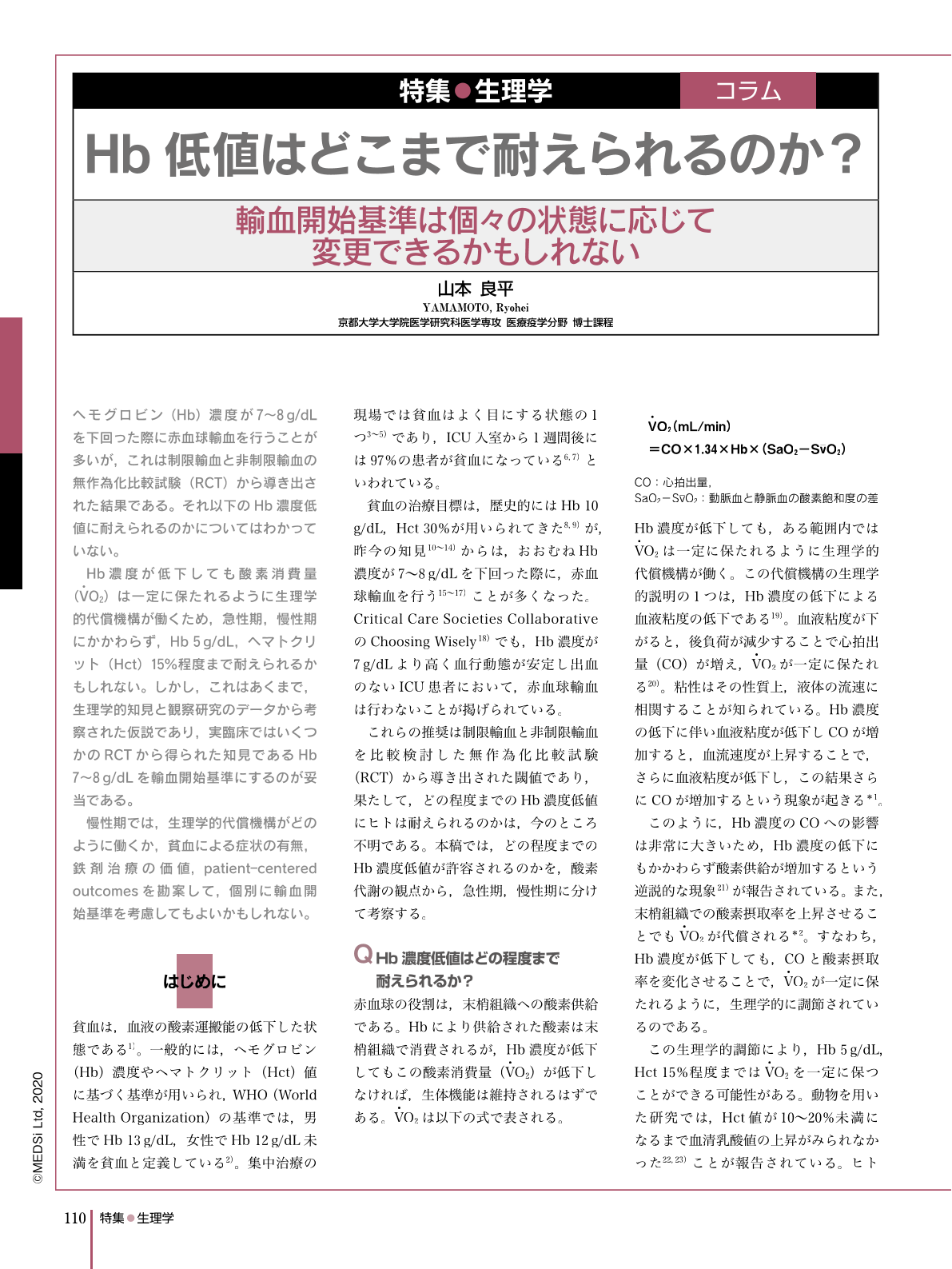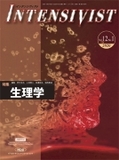Japanese
English
- 有料閲覧
- Abstract 文献概要
- 1ページ目 Look Inside
- 参考文献 Reference
- サイト内被引用 Cited by
ヘモグロビン(Hb)濃度が7〜8g/dLを下回った際に赤血球輸血を行うことが多いが,これは制限輸血と非制限輸血の無作為化比較試験(RCT)から導き出された結果である。それ以下のHb濃度低値に耐えられるのかについてはわかっていない。
Hb濃度が低下しても酸素消費量(VO2)は一定に保たれるように生理学的代償機構が働くため,急性期,慢性期にかかわらず,Hb 5g/dL,ヘマトクリット(Hct)15%程度まで耐えられるかもしれない。しかし,これはあくまで,生理学的知見と観察研究のデータから考察された仮説であり,実臨床ではいくつかのRCTから得られた知見であるHb 7〜8g/dLを輸血開始基準にするのが妥当である。
慢性期では,生理学的代償機構がどのように働くか,貧血による症状の有無,鉄剤治療の価値,patient-centered outcomesを勘案して,個別に輸血開始基準を考慮してもよいかもしれない。
We often perform red blood cell transfusions when the Hb concentration falls below 7-8g /dl, which is based on the results of RCTs of restricted and unrestricted blood transfusions. It is not known how well lower Hb levels can be tolerated. The physiological compensation mechanism works to keep VO2 constant even when the Hb concentration decreases, so Hb levels as low as 5g /dl (Hct 15%) may be tolerated both acutely and chronically. However, this is a hypothesis based on physiological principles and observational study data. In clinical practice, it is appropriate to keep the Hb at 7-8g/dl. This is based on several RCTs. In chronic anemia, transfusion initiation criteria may be considered individually, taking into account the physiological compensation mechanisms at work, the presence or absence of symptoms due to anemia, the chance of iron treatment, and the patient-centered outcomes.

Copyright © 2020, MEDICAL SCIENCES INTERNATIONAL, LTD. All rights reserved.


